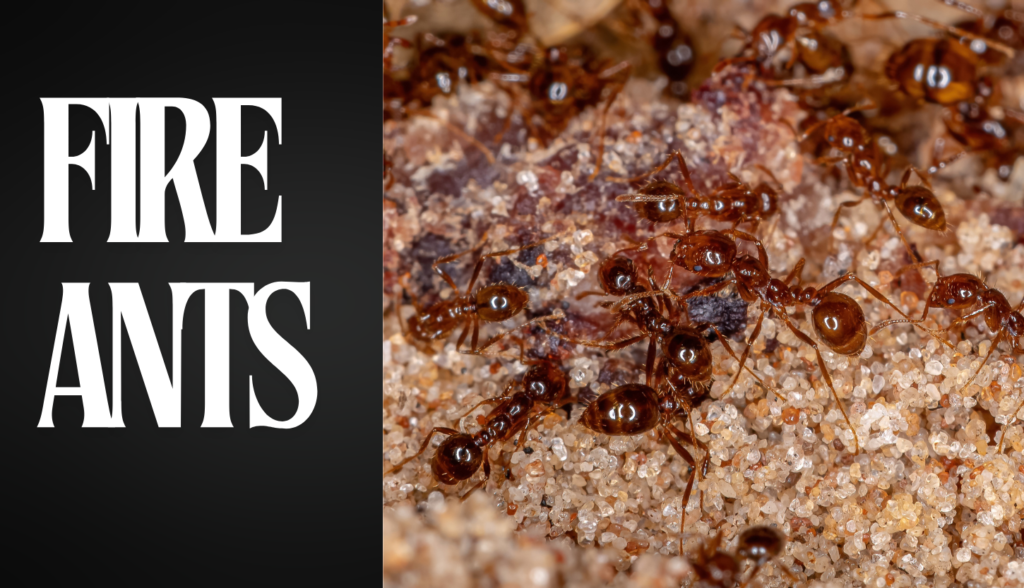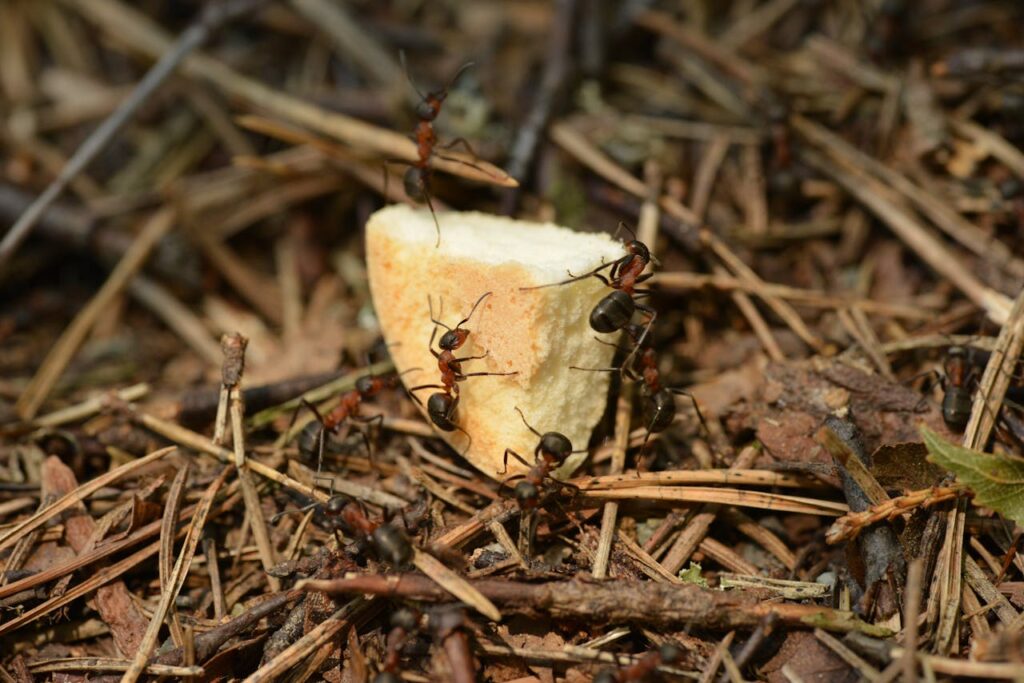Have you ever found yourself stepping out into your yard, only to see fire ants scurrying all over your lawn? Doesn’t it leave you with a sense of annoyance and unease? These tiny terrors can indeed transform your inviting outdoor space into a veritable minefield of painful bites. Don’t worry, though. You’re in the right place to learn how to reclaim your yard and ensure your home is a safer haven for you and your family.
Understanding Fire Ants
Before diving into how to control fire ants, it’s important to understand a little more about these feisty invaders. Fire ants are known for their aggressive behavior and their painful, burning stings. A fire ant problem is not just an annoyance—it can pose serious risks, especially to kids, pets, and those with allergies.
What Are Fire Ants?
Fire ants are a type of stinging insect that originate from South America. They’re notorious for their fiery sting, which can cause itching, swelling, and even severe allergic reactions. These ants are reddish-brown and create large, noticeable mounds. They’re omnivorous, meaning they’ll eat almost anything, from sugary sweets to proteins, making your backyard or home a prime target.
Why Are They a Problem?
Fire ants can quickly overrun your yard, creating hazardous conditions for outdoor activities. Their bites can be painful, lead to secondary infections from scratching, and in some cases, cause severe allergic reactions that require immediate medical attention.
Species of Fire Ants
There are several species of fire ants, but the Red Imported Fire Ant (RIFA) is the most notorious in the United States. Recognizing the species can help you better understand their behavior and the best ways to manage them.
| Species | Description | Geographic Location |
|---|---|---|
| Red Imported Fire Ant (RIFA) | Most aggressive, known for large mounds | Southern U.S, Southeast, and Southwest |
| Southern Fire Ant | Smaller mounds, less aggressive | Southwest U.S. |
| Tropical Fire Ant | Similar to RIFA, invasive | Southern U.S., mostly Florida |
Identifying Fire Ants in Your Yard
Knowing how to identify fire ants is key to managing them effectively. Identifying them early can help you take measures before they become a full-blown infestation.
How to Spot Fire Ant Mounds
Fire ant mounds are dome-shaped and can range from a couple of inches to over a foot high. Unlike other ant mounds, fire ant mounds typically don’t have a visible entry or exit hole, as fire ants enter and exit through tunnels.
Differences Between Fire Ants and Other Ants
Fire ants can be distinguished from other ants by their reddish color and aggressive behavior. When disturbed, fire ants quickly swarm and sting. Additionally, fire ant mounds are often found in sunny, open areas such as lawns and pastures.
Signs of Fire Ant Presence
Be on the lookout for:
- Sudden appearance of small to large mounds
- Aggressive swarming when disturbed
- Painful stings that lead to itchy, burning sensations
Preventing Fire Ant Infestations
Prevention is the best defense against fire ants. By making your yard less attractive to these pests, you can significantly reduce the risk of an infestation.
Regular Yard Maintenance
Keep your yard well-maintained. Regular mowing, raking, and removing debris can destroy fire ant habitats and discourage them from settling in your yard.
Control Food Sources
Clean up food and drink spills immediately and cover trash bins securely. Fallen fruits and food scraps are a feast for fire ants, and reducing their access to these can deter them.
Natural Predators and Biological Control
Encourage natural predators such as birds and certain types of parasitic flies, which can help keep fire ant populations in check.
Controlling Fire Ants: Treatment Methods
Once fire ants have invaded, it’s time to consider your control options. There are various methods, ranging from natural treatments to chemical solutions.
Chemical Treatments
Chemical treatments are often the most effective means of quickly reducing fire ant populations. However, they should be used responsibly to minimize environmental impact.
| Product Type | Active Ingredient | Usage |
|---|---|---|
| Baits | Hydramethylnon, S-methoprene | Spread around mounds |
| Contact Insecticides | Deltamethrin, Cypermethrin | Apply directly on mounds |
| Growth Regulators | Pyriproxyfen | Broadcast over larger areas |
Natural and Organic Treatments
For a less toxic approach, consider natural treatments. These can be effective but often require more persistence.
| Natural Solution | Method | Effectiveness |
|---|---|---|
| Boiling Water | Pour over mound | Immediate kill, risk of plant damage |
| Diatomaceous Earth | Sprinkle on and around mound | Cuts ants’ exoskeletons, eventually kills them |
| Essential Oils (e.g., orange oil) | Mix with water, spray on mounds | Natural insecticide, disrupts pheromones |
Employing a Two-Step Method
A two-step method involves first applying baits to attract and poison worker ants, followed by a targeted application of contact insecticides to eliminate any remaining ants.
Fire Ant Baits
Baits are slow-acting poison that worker ants carry back to the colony, eventually reaching the queen. This method ensures the extermination of the entire colony.
Mound Treatments
For immediate results, apply mound treatments such as dusts, granules, or liquid insecticides directly to the mound. This can quickly reduce the fire ant population in problem areas.

Homemade Remedies for Fire Ants
For those who prefer a do-it-yourself approach, several homemade remedies can help manage fire ant populations.
Soap and Water Solution
Mixing dish soap with water and spraying it directly on the ants can suffocate and kill them. This is a quick fix that can reduce the number of active ants.
Baking Soda and Vinegar
Combining baking soda and vinegar creates a chemical reaction that can kill fire ants on contact. Pour this mixture directly into the mound for best results.
Grits or Cornmeal
Sprinkling grits or cornmeal around the mound can be an effective control method. Ants consume these, which expand inside them and cause them to die.
Ongoing Maintenance and Monitoring
Once you’ve invested the time and effort into eliminating fire ants, keeping them at bay involves some ongoing maintenance. Regular inspections and treatments will help ensure your home remains safe and pest-free.
Regular Yard Inspections
Perform routine inspections of your yard, focusing particularly on areas where fire ants are likely to establish their colonies. Look for new mounds and disturbed soil.
Reapplication of Treatments
Regularly reapply baits and other treatments as indicated on the product label. This is especially crucial during peak ant activity periods, typically spring and fall.
Engaging with Professional Services
If your fire ant problem persists despite your best efforts, it may be time to call in the professionals. Pest control experts have access to more potent treatments and can provide a long-term management plan.
Additional Safety Measures
In addition to eliminating fire ants, you can take steps to protect yourself and your family from stings.
Educate Family Members
Educate your family about the dangers of fire ants and teach them how to identify fire ant mounds. This allows everyone to be cautious and avoid getting bitten.
Protective Clothing
When performing yard work, especially in areas known to have fire ants, wear protective clothing such as gloves, long sleeves, and boots.
First Aid for Stings
Knowing how to respond to fire ant stings can mitigate the discomfort and reduce the risk of complications. Clean the affected area with soap and water and apply an antihistamine cream to reduce itching. Seek medical attention if there’s a severe allergic reaction.
Long-Term Solutions and Research
Science and pest control technology are always evolving, offering new, more effective ways to manage fire ants. Staying updated with these advancements can provide you with better control strategies.
Advances in Fire Ant Control
Recent research focuses on more sustainable methods such as biological control agents and environmentally friendly chemical controls. Keeping abreast of these developments can provide better, more effective solutions for fire ant control.
Integrated Pest Management (IPM)
IPM involves a combination of biological, cultural, mechanical, and chemical tools to manage pests with minimal environmental harm. By adopting IPM practices, you can achieve more sustainable fire ant control.
Final Thoughts
Mastering fire ant control involves understanding their behavior, identifying signs of their presence, implementing effective prevention and control measures, and maintaining long-term management strategies. It’s a multi-faceted approach that, with diligence and persistence, can ensure your yard remains a safe, enjoyable space.
Fire ants needn’t turn your outdoor paradise into a battleground. With the knowledge and tools outlined in this guide, you can take proactive steps to control and eliminate these pests, ensuring a safer home for you, your family, and your pets.
Take the first step today, and say goodbye to fire ants once and for all. You’ve got this!
By approaching fire ant control systematically, you’ll be better equipped to handle these persistent pests, allowing you to enjoy your home and yard to the fullest. Here’s to a safer, fire ant-free home!

